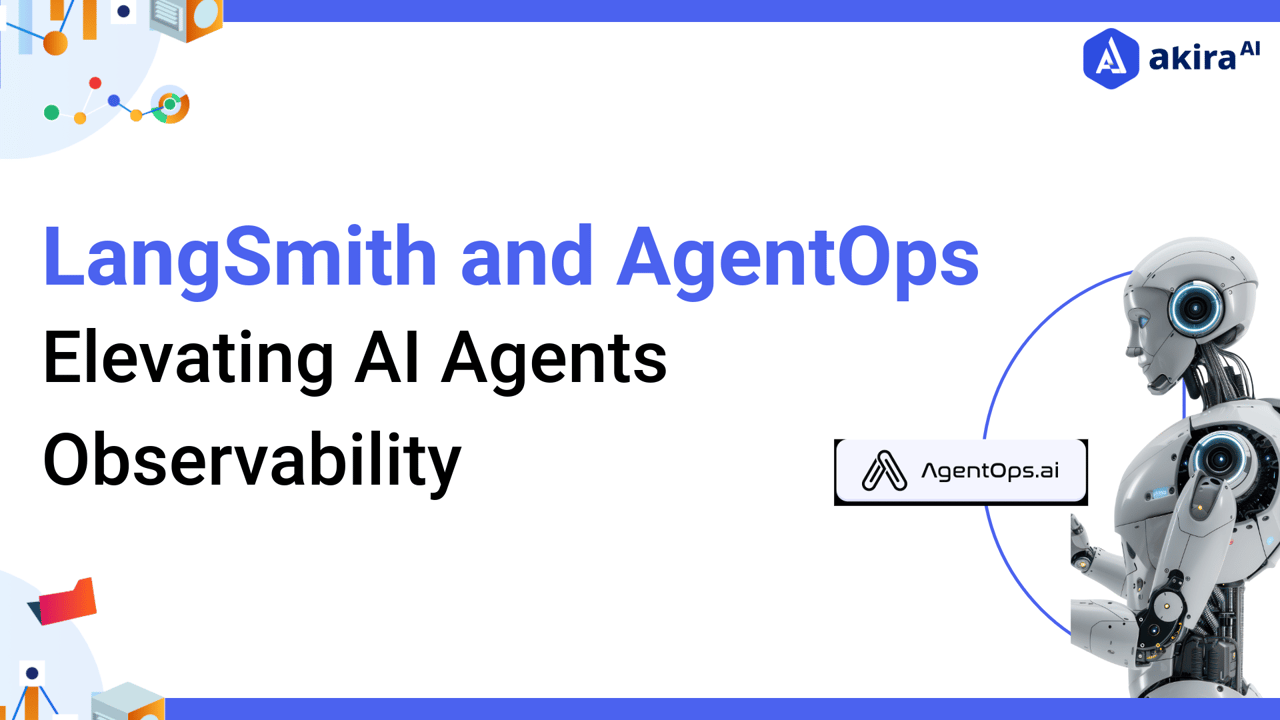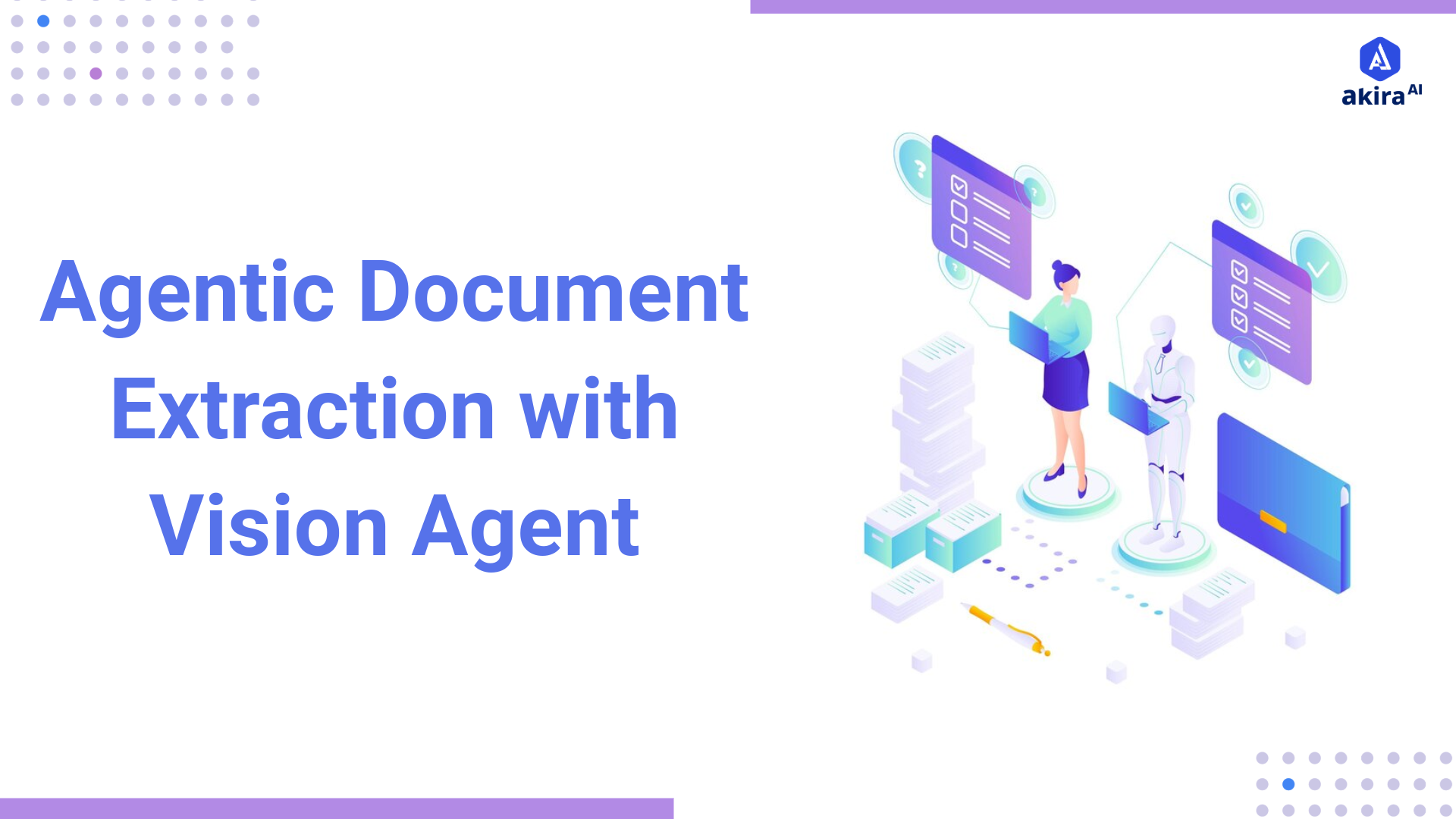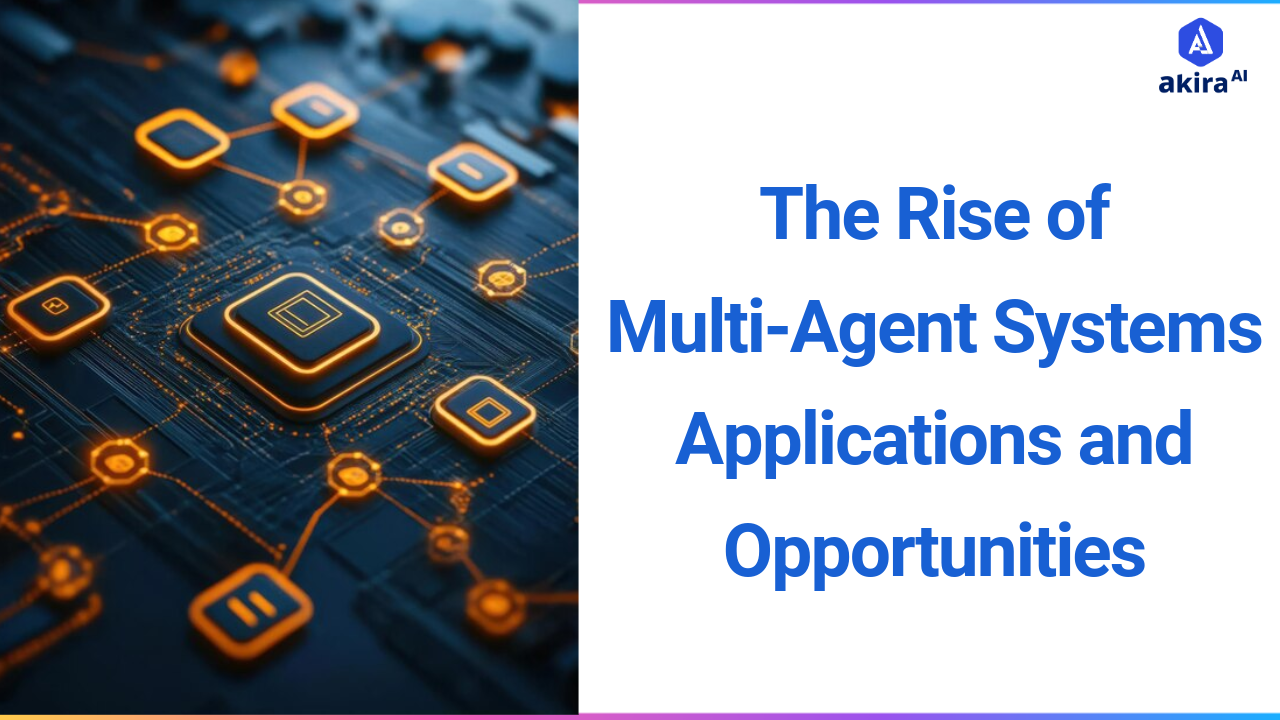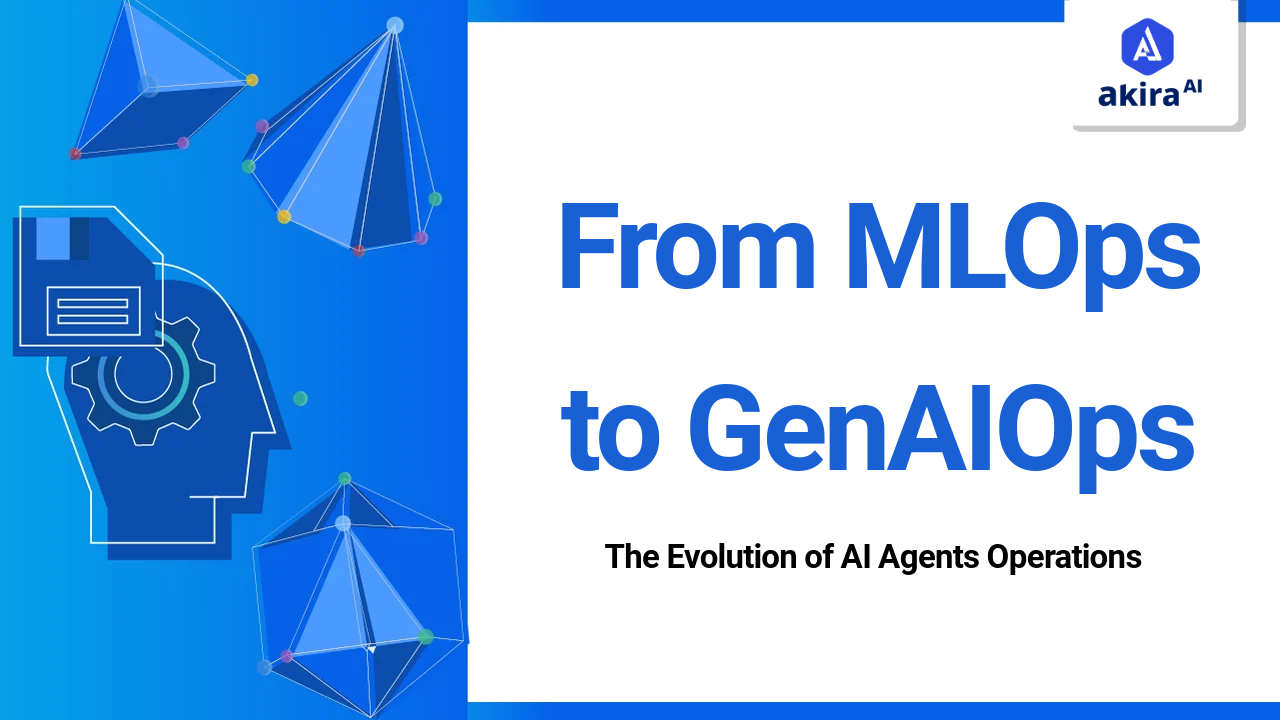Key Insights
Agent observability, enabled by tools like LangSmith and AgentOps, provides deep visibility into the behavior of AI agents, ensuring transparency, efficiency, and reliability. LangSmith excels in tracing and optimizing LLM interactions, while AgentOps monitors multi-agent systems for performance bottlenecks and collaboration quality. These platforms empower businesses to debug faster, optimize processes, and scale AI operations effectively.

In today’s rapidly advancing AI landscape, agent-based systems—whether built on Large Language Models (LLMs) or traditional AI frameworks—are increasingly handling complex, autonomous tasks. As these systems take on critical roles in industries like manufacturing, finance, and logistics, the need for robust observability becomes more essential. Observability enables us to gain deep visibility into the inner workings of these agents, helping ensure their transparency, efficiency, and reliability.
This blog explores LangSmith and AgentOps, two innovative platforms designed to deliver actionable insights into AI systems' operations. These platforms offer tools to monitor, analyze, and optimize the behavior of AI agents in real-time, making them indispensable for businesses relying on AI-driven solutions.
Background: Overview of Core Concept
What is Observability in Agentic AI?
Observability is essentially gaining insight into how an AI agent or a system of agents works internally, as used in agentic AI. That is far ahead from the traditional monitoring approach that tends to focus on external metrics-the kind of percentage of uptime of a system or network status-to understand how an AI agent or a system of agents functions.
It involves gathering and analyzing data with agent behavior for interaction with environments or other agents, response behavior in answering queries posed to them, efficiency in processing workloads, and error-handling capabilities. Providing observability gives visibility into internal processes clearly giving a better view of how functionalities operate; thus, it supports easier debugging, performance optimization, and identification of potential failure points.
Observability tools, such as LangSmith and AgentOps, go beyond simple logs and metrics. They offer actionable insights that help developers and operators optimize agent performance.
Why is Observability Essential?
Observability makes the working of AI agent systems transparent and accountable. Without it, one can hardly understand the "why" behind some decisions, especially in LLM or multi-agent environments. Debugging will be much harder because, even if errors happen, tracing back the roots of the error toward specific decision points will become cumbersome.
Tools like Langsmith, push observability further into the LLMs so traces can be taken for the responses and hence easier to debug those problems on the part of the developer. AgentOps on the other side is for multi-agent systems, allowing teams to track collaboration, interaction, as well as the behavior of the agents.
Implementation of LangSmith and AgentOps
LangSmith Implementation
LangSmith excels particularly in looking at how large language models work: it traces, logs, and analyzes all interactions between users and the model. This allows developers to monitor user queries and model responses and intermediate steps in real-time- and makes it easier to decide what doesn't quite meet output expectations. For example, if the customer service chatbot gives some wrong response, LangSmith enables the developer to go back through the whole conversation and can check- the input of the user or how the model has processed it, or even details like token usage and latency-all of them prove to be rich feeds about the model's efficiency and performance.
How Developers Can Utilize LangSmith:
-
Logging Interactions: All user-model interaction instances will be logged automatically for analysis and review.
-
Performance Metrics: Model latency, token consumption, and execution time against which the model will be optimized in the continuous improvement process.
-
Error Debugging: Quickly identify incorrect outputs and errors which significantly helps in reducing troubleshooting time and enhancing the debugging process.
-
Evaluation Chains: It employs pre-defined evaluation chains that assess the performance of a model regarding assigned tasks, including precision and relevance.
AgentOps Implementation
AgentOps addresses multi-agent systems where many AI agents interact and cooperate to achieve the goals of the systems. A good example might be a fleet of warehouse robots working cooperatively in synchronization to transport packages. AgentOps helps developers monitor the performance of each agent, identify bottlenecks in decision-making processes, and determine if there is one agent that's causing the overall inefficiency of the system.
How Developers Can Utilize AgentOps:
-
Telemetry Data: It records fairly detailed data about the decisions by agents, transitions, and actions that give comprehensive insight into agent operation.
-
Behavioral Monitoring: Evaluate every decision by each of the agents based on what is supposed to be done by it and the tool executed.
-
Real-time Alerts: In case agents deviate from their assigned tasks or goals, real-time alerts are generated to correct the situation.
-
Collaboration Analysis: It analyses the quality of agent collaborations to make the agent interactions and overall performance better.
Architecture Diagrams and Explanations
 Fig1: Architecture Diagram of Langsmith and AgentOps
Fig1: Architecture Diagram of Langsmith and AgentOps
-
Core Workflow Engine: At the core of Akira AI lies its workflow engine, which is used to process every kind of data from LangSmith’s LLM observability to AgentOps multi-agent observability and aggregates logs, metrics, traces, and performance data.
-
Custom Dashboards: All observability metrics are displayed here, and can monitor the health and performance of LLM-based applications and multi-agent systems over time.
-
Metrics and Traces: This block stores and processes detailed performance data, including:
-
LLM Call Trace: Provides data on calls to the LLM APIs which, in turn, may allow tracing execution flow, failure detection, and model behaviors.
-
Cost Analysis: It tracks costs related to LLM calls, tracks resource utilization, and measures total operating costs.
-
Anomaly Detection & Alerts: Use the collected data to identify outliers or anomalous behavior related to agent activity or LLM responses to trigger alerts on some potential issues with the system.
Running Applications
-
LLM-based Application: LangSmith tracks interaction, token usage, and other performance metrics of an AI system based on large language models.
-
Multi-Agent System: An AI system in which multiple agents collaborate, monitored by AgentOps to analyze the pattern of interaction, the metrics of collaboration, and resource utilization.
LangSmith and AgentOps Observability
-
LangSmith constantly checks detailed statistics on LLM conversation traces, token usage, response times, and call traces. All such data is passed systematically through APIs to Akira AI for the central purpose of monitoring.
-
AgentOps tracks multi-agent interaction logs, collaboration, resource usage, and cost metrics. These insights flow into Akira AI for real-time analysis and optimization of agent workflows.
Key Benefits of AgentOps
-
Deep Transparency and Insights: These observability tools provide complete transparency of the decisions and actions taken by an AI agent. Because each decision is tracked, it provides chances for developers to explore the data and determine mistakes or inefficiencies.
-
Accelerated debugging and troubleshooting: They also unravel the work by providing the developers with filled logs and real-time alerts, thereby enabling them to rapidly identify and debug problems.
-
Performance Optimization: This would help for further optimizations of LLM-based applications. For example, LangSmith lets a developer understand the efficiency with which LLMs process their data, specifically in terms of token usage, response latency, and general efficiency that helps developers pinpoint bottlenecks within the system.
-
Scalability and Adaptability: As the scale of deployments of AI agents is increasing, so should the scalability of observability offered by the firm. AgentOps is designed specifically for monitoring large multi-agent systems, aggregating information from many sources without degradation in performance.
Use Cases of AgentOps
-
Manufacturing: Predictive models of maintenance are used to determine the possibility of machine failure in a factory. How the models make decisions can be traced to provide an open insight into how predictions about downtime are formed. This is done to ensure accuracy in the servicing of equipment and distribution of resources.
-
Customer Service and Chatbots: For instance, in e-commerce companies, an AI agent may process thousands of queries each day. If a customer gets the wrong or irrelevant reply, then developers can trace exactly where it went wrong whether it is at the model logic level, due to misinterpretation, or poor data inputs.
-
Healthcare: Medical Diagnosis Systems: Accuracy in healthcare is crucial. AgentOps can track AI agents used in medical diagnosis and always point out patients' data for diagnosis suggestions. Medical providers can be assured that the suggestions offered by the AI are reliable, not biased, and safe upon observing the decision-making process.
-
Finance: Fraud Detection: In the finance sector, AI agents are employed to identify potentially fraudulent transactions. By monitoring its decision-making processes, organizations can trace the rationale behind each flagged transaction. This transparency allows financial institutions to refine their fraud detection models and reduce false positives, ensuring legitimate transactions proceed smoothly while enhancing security.
Integration With Akira AI
The following steps would allow the integration of LangSmith and AgentOps with Akira AI for effective monitoring and workflow management:
APIs: API interfacing from LangSmith and AgentOps can be integrated into the architecture of Akira AI to allow for the smooth-flowing data between tools of observability and those workflows that already exist within Akira.
Custom Dashboards: Akira AI has built-in the integration of dashboards right into the interface. This allows a seamless view and enables users to view agent performance, watch metrics, and identify problems without changing levels.
Data Ingestion: Akira AI will ingest telemetry and logs from LangSmith for LLM observability and AgentOps for multi-agent performance monitoring. In other words, all this collection, processing, and analysis falls within the Akira ecosystem.
Alerting System: It integrates alerting capabilities of LangSmith and AgentOps with Akira AI; in other words, the platform permits a real-time sending of a notification relating to performance anomalies, a bottleneck in decision-making processes, or unexpected agent behavior.
Collaborative Agent Optimization: Such integrations enable Akira AI to generate collaborative analytics for multi-agent systems, thus optimizing LLM-based workflows where the execution of tasks is efficient and agents interact with each other smoothly.
Challenges and Limitation
Although LangSmith and AgentOps offer the value of observability tools, they do come with their challenges.
-
Performance Overhead: Agentic systems whose activity constantly goes through logging and monitoring always incur some performance overheads, especially in resource-poor environments. Data collection will include delays in system operation, specifically when involving applications with high traffic or multi-agent systems with many interactions.
-
Data Volume Management: As the complexity of AI agents increases, the volume of telemetry data is similarly going to escalate. Without proper data management or filtering, the overwhelming amount of information could potentially drown the system and the developers too. Large-scale agent-based systems produce a volume of telemetry data that can't be processed or made meaningful insights from.
-
Integration Complexity: The APIs can allow for integration with LangSmith and AgentOps. Integration processes by their nature are, therefore, technically quite demanding in themselves; and especially where particularly highly specialized or legacy system-to-integrations are concerned- require quite a significant overhaul of existing infrastructure.
-
Interpretable Issues: For most AI applications, observability is robust. It might not be easy, to understand why a particular model or agent behaves in a specific way. More so for LLMs, biased or unusual outputs could be only well understood in depth by additional domain expertise.
Future Trends of AgentOps
The observability of AI shortly would be oriented toward self-optimizing agents. They would have the ability to learn from observations and optimize themselves in real-time. This would lead to reducing the need for human intervention for debugging or optimization and hence lead to more autonomous systems.
-
Predictive Observability: It is another trend gaining momentum. Instead of monitoring agents in real-time on the expected events, the future systems will predict failures or possibly suboptimal behaviors ahead of time, thus allowing for pre-emptive adjustments.
-
Advanced Multi-Agent Coordination: Observability tools will be able to vastly control more complicated multi-agent systems containing tens of cooperating agents. Advanced tracing will have to be improved enough so that developers can trace interactions down to very complex systems in decentralized systems.
-
Edge AI Monitoring: As more AI moves out to the edge, it will prove a nice challenge for observability tools to adapt to such decentralized edge systems. It brings in a whole new set of challenges and opportunities for ensuring that the level of observability remains as effective in distributed environments as it is on centralized premises.
Conclusion: Agent Observability with LangSmith and AgentOps
As AI agents become more central to critical operations across industries, having robust observability systems like LangSmith and AgentOps will be essential. These platforms not only offer transparency into the inner workings of these systems but also provide powerful tools for debugging, optimizing, and scaling AI operations. From predicting machine failures in factories to managing trading bots in finance, observability transforms the way we manage AI, making systems more reliable, efficient, and understandable.
With the adoption of observability, businesses can realize full capacity in their AI systems, such that agents would be able to act and learn with strategy objectives. The future of observability promises even more automation, predictive power, and adaptability, laying the groundwork for the next generation of intelligent, autonomous systems.


